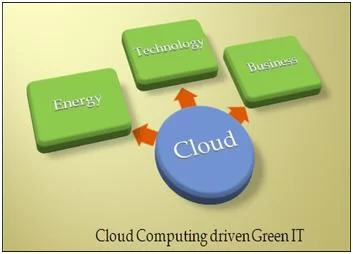Green cloud is a buzzword that refers to the potential environmental benefits that information technology (IT) services delivered over the Internet can offer society. The term combines the words green — meaning environmentally friendly — and cloud, the traditional symbol for the Internet and the shortened name for a type of service delivery model known as cloud computing.
Need of Green Computing in Clouds
Modern data centers, operating under the Cloud computing model are hosting a variety of applications ranging from those that run for a few seconds (e.g. serving requests of web applications such as e-commerce and social networks portals with transient workloads) to those that run for longer periods of time (e.g. simulations or large data set processing) on shared hardware platforms.
The need to manage multiple applications in a data center creates the challenge of on-demand resource provisioning and allocation in response to time-varying workloads. Normally, data center resources are statically allocated to applications, based on peak load characteristics, in order to maintain isolation and provide performance guarantees.
Goals of Green Computing
The goals of green computing are similar to green chemistry; reduce the use of hazardous materials, maximize energy efficiency during the product’s lifetime, and promote the recyclability or biodegradability of defunct products and factory waste. Research continues into key areas such as making the use of computers as energy-efficient as possible, and designing algorithms and systems for efficiency-related computer technologies.
There are several approaches to green computing, namely
• Product longetivity
• Algorithmic efficiency
• Resource allocation
• Virtualization
• Power management etc.
Green Cloud can be used to develop novel solutions in monitoring, resource allocation, workload scheduling as well as optimization of communication protocols and network infrastructures. It is released under the General Public License Agreement and is an extension of the well-known NS2 network simulator.

Until recently, high performance has been the sole concern in data center deployments and this demand has been fulfilled without paying much attention to energy consumption. The average data center consumes as much energy as 25,000 households [20]. As energy costs are increasing while availability dwindles, there is a need to shift focus from optimizing data center resource management for pure performance to optimizing for energy efficiency while maintaining high service level performance. According to certain reports, the total estimated energy bill for data centers in 2010 is $11.5 billion and energy costs in a typical data center double every five years.
Result
The results show flexibility of the algorithm, as the thresholds can be adjusted according to SLA requirements. Strict SLA (1.11%) allows the achievement of the energy consumption of 1.48 KWh.

